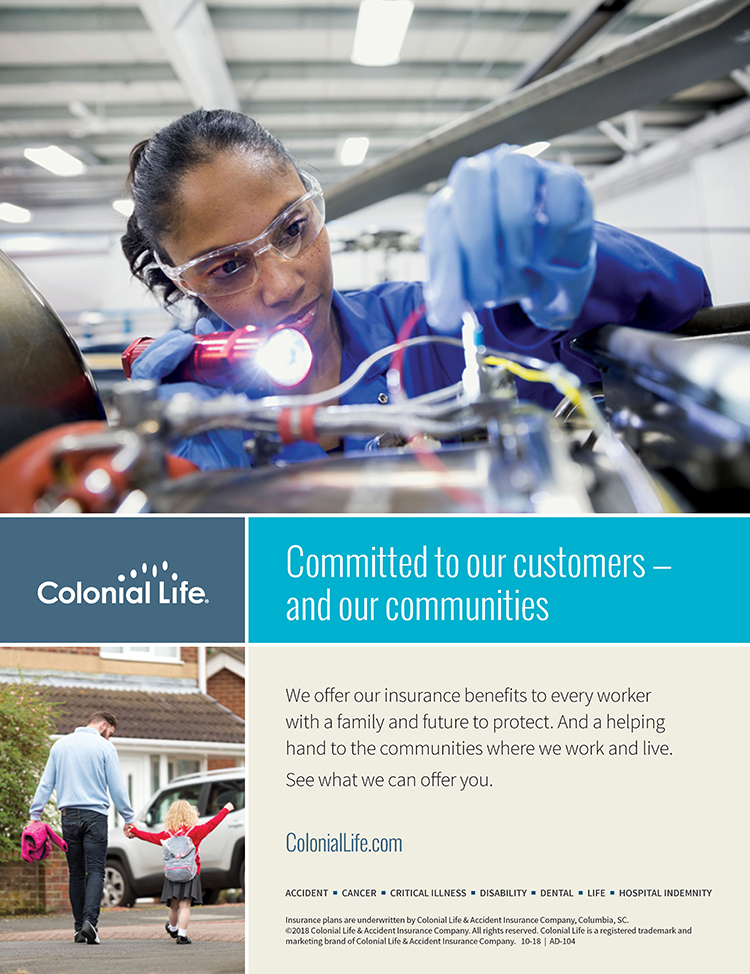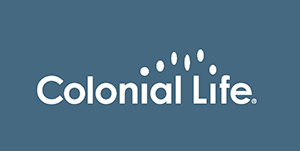Benefits and services that help handle stress lead to better productivity and engagement
By Jimmy Hinton, Wes Hudnall, and Chris Menard
If keeping your workforce productive and engaged during a pandemic isn’t already challenging enough, here’s something else to consider: employee stress.
A new survey* by Colonial Life found 40% of U.S. adults have high or moderate stress levels on a daily basis — enough to distract them from work and keep them from being as productive as they (and you) would like. In fact, nearly one in four adults say they spend more than five hours of work time each week worrying.
That could be costing your company untold thousands of dollars in lost productivity. More than a quarter of adults admit their stress makes them less productive at work, and 15% say they’re less engaged.
The top cause of employee stress is money, according to 21% of those surveyed. Right on its heels is work, at 20%. Health concerns are also high on the list for a significant number of workers, either of their family members (17%) or themselves (13%). And right now, the coronavirus pandemic is creating the perfect storm where concerns about money, work and health come crashing together.
The good news is there’s a lot you can do to help employees with their emotional wellbeing during these unprecedented times. And — without a big impact on your company’s bottom line. Here are three areas to focus on that can pay big returns in the productivity, morale and health of your workforce.
Provide more flexibility.
Workers name more pay and more time off as the top two things that would help relieve some of their stress, according to Colonial Life’s survey. But interestingly, those responses are significantly lower this year than when we asked the same question last year: higher salary dropped from 67% to 52%, and more time off fell from 50% to 40%. However, workers now have a higher interest in a more flexible work schedule (up from 34% last year to 38% this year) and a more flexible work location (up from 20% to 25%).
With many offices closing and shifting to work-from-home scenarios during the pandemic, employers are finding their workforce can be just as productive with increased flexibility in hours and locations. Sure, many workers will be glad to return to the structure and society of a traditional office in the future. But smart employers will use this time to learn and get prepared for more flexible work arrangements as the “new normal” going forward.
Offer wellbeing programs and services.
Another significant change in the survey results year-over-year is increased interest in wellness programs and discounts (up from 17% to 23%), and additional voluntary benefits such as life, disability and accident coverage (up from 14% to l7%).
A successful wellness program can be measured in fewer sick days, reduced occurrences of preventable chronic conditions and their complications, a more positive work environment, increased productivity and higher employee retention rates due to improved morale. Results also show up on both your company’s bottom line and in your employees’ wallets. Estimates from different studies vary, but generally show a return of at least three-to-one for every dollar a company invests in a comprehensive wellness program. And healthier employees spend less on doctor’s office co-pays, prescriptions and other treatments that may not be covered by medical insurance until they meet their deductibles.
A successful wellness program doesn’t have to be expensive. Consider sponsoring a walking club, bringing in brown-bag speakers on health topics, and supporting weight-loss and stop-smoking programs. Other wellness program components to consider include:
- Employee assistance programs for short-term counseling and referral services to help employees with personal and family issues and work/life balances. Services are typically free and include in-person, phone or online counseling and other online tools and educational resources.
- Discount programs for drugs and medical services that help employees save money on doctor office visits, prescription drugs, vision and hearing products and services, lab work and imaging tests. Even if you already offer a health or prescription drug plan, a discount program can complement it by helping pay for services that are limited or not covered, especially with a high-deductible health plan that leaves employees with considerable financial exposure to out-of-pocket costs. Your voluntary insurance provider may be able to provide a discount program for low or no cost.
- Wellness benefits embedded in some types of voluntary insurance pay a set amount for preventive screening tests such as colonoscopies, mammograms and X-rays, so potential problems are caught earlier, when they’re easier and less expensive to treat. The benefits paid for annual screening tests also make the coverage even more affordable, in effect reducing the net cost of the voluntary benefit premiums for employees. The wellness benefit is paid even if the exam is covered by health insurance and the amount doesn’t depend on the actual cost of the test.
Communicate for stronger engagement.
Of course, the best programs in the world don’t work if employees don’t know about them. And on the flip side, employees who understand their benefits are more engaged at their workplace, more satisfied and more likely to stay.
Earlier Colonial Life research shows 45% of employees who say they understand their benefits very well report high job satisfaction. And when asked how their employer makes them feel, 36% of employees who say they understand their benefits feel “highly cared about.” Just 13% of those employees say they don’t feel cared about.
Ensure you’re using effective communications that engage employees in all the resources you have to offer. Some voluntary benefits providers offer comprehensive communication services for an employer’s entire benefits program, not just the voluntary coverage. If you’re not sure, ask.
In today’s challenging environment, stress is a given. But you can help your employees thrive despite the unexpected moments in life with a focus on flexibility, wellbeing and communication.
*Online research administered March 23-30, 2020 by Dynata on behalf of Colonial Life among 1,200 U.S. adults.
About Colonial Life
Colonial Life & Accident Insurance Company offers critical support to America’s workers and their families when the unexpected happens. The company is a market leader in benefits education and delivery, innovative enrollment technology and customer experience. Colonial Life provides disability, life, accident, critical illness, cancer, dental and vision benefits that protect millions of customers and their families. For more information, connect with us on Facebook, Twitter and LinkedIn.

